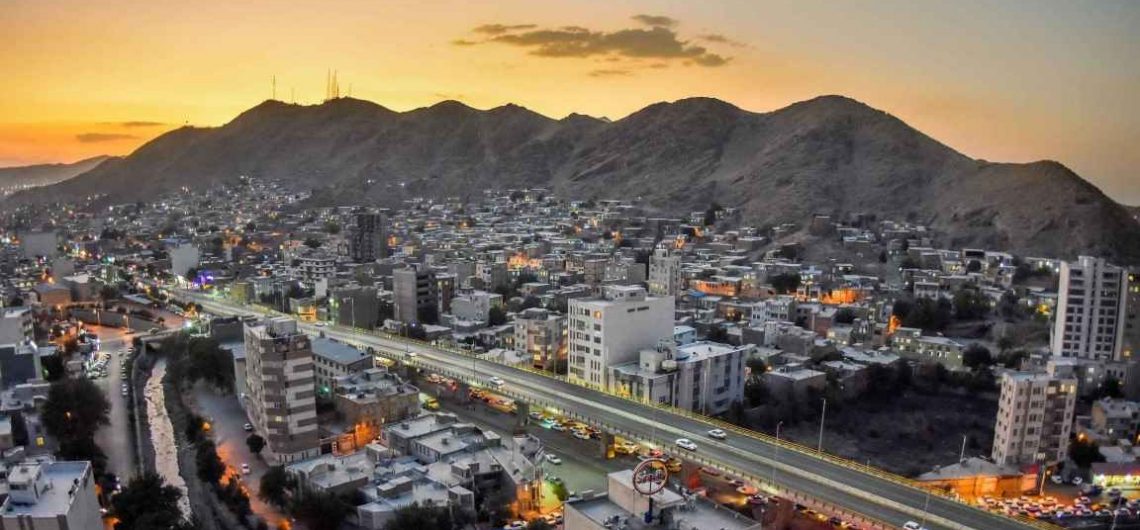Arak
Arak is the capital of the Marazi province. Originally called Soltán Abad, the modern city of Arak was founded in 1808. Arak is surrounded by mountains to the south, west and east, and its average altitude is about 1,750 m above sea level. It is located 260 km from the city of Tehran.
The main agricultural products of the city are wheat, barley and fruits such as grapes, apple, walnut and almond. Arak also exports hand-knotted rugs, known as Sarouk rugs, named after a small town on the outskirts of Arak.
Anyedan town
The town of Anyedan, located 40 km east of Arak, is very attractive for its natural beauty, beautiful caves, hunting grounds and historical remains. As this town was the center of the settlements and activities of the Ismaili sect after the Mongol invasion, some tombs of the leaders of this cult are still preserved, such as the mausoleum of Shah Qarib and Shah Qalandar, whose entrance door is decorated with beautiful drawings and calligraphy of the Quran.
Suleh Khunzab Cave
The cave is located in the Shams Abad Mountains, 15 km south of Arak. To the right of the rocky wall of the mountain is the first opening of the cave and the second exists higher. The cave is 27 m long and 1.5 m wide. Further up in this area there is another cave with springs of drinking water.
Kahriz River (Kuhrud)
This river is born in the mountains of Qarah Kahrizak and, after irrigating some villages near Arak, it empties into the desert of Miqan. This river is seasonal and dries up in summer to recover with the rainy season.
Haftad Qoleh Protected Area
With an area of 82,125 hectares, it is located in Arak and Mahallat. This part comprises a set of highlands, hills and steppe plains. Its mountainous regions are home to rare species of wild flora. This area, due to its merits and the abundance of a varied fauna, has been considered one of the oldest hunting areas in Iran, favored by the monarchs, especially the Qajar kings.
Since 1970, as this region has been impoverished in terms of fauna and flora, like other regions, the Ministry of the Environment has declared it a protected area, prohibiting hunting. This region experiences cold winters and moderate summers.
Baqer Abad Bridge
This bridge belongs to the contemporary era, built during the Russian invasion of Iran. It is located on the old Arak-Isfahan highway. The main bridge was destroyed by a flood and later rebuilt. The material used in its construction was generally stone with an interesting architecture.
Arak Bazaar
A part of this bazaar dates from the 19th century with an exceptional architectural style. This bazaar was built with bricks baked and dried in the sun. In addition to warehouses and shops, this bazaar is home to the historic Arak Sepahdari School.
Sepahdari Seminary
One of the historical buildings from the Qajar era that was built at the same time as the Arak bazaar by order of Yusef Khan-e-Gorji, the great Sepahdar (governor) and founder of Arak. Sepahdari Seminary is considered the first school founded in Arak and is the first urban building inspired by the styles of the Safavid period with delicate and elegant tiles from the Qajar period.
Hasan Pur’s House
It was founded in the time of Ahmad Shah Qajar. According to studies and research, its construction is attributed to Haj Ali Moshiri, one of the carpet merchants and businessmen from Sultan Abad (now Arak). The construction of the building mainly dates back to the Qajar period.
Four Seasons Bath
It is one of the ancient relics of Arak from the late Qajar period. Its construction is one of the most beautiful architectural works in Iran, considered a unique monument in Iranian architecture for its special decoration. In fact, it is the only bathroom in the country that has a specific section for religious minorities. After the renovations, a museum of archeology and anthropology was also inaugurated.
If you are passionate about mountains, anthropology, historical landscapes and the fascinating culture of the Middle East, SITO Travel will help you organize your trip to Iran. Contact us because our experience is born and developed in the field.



Comments